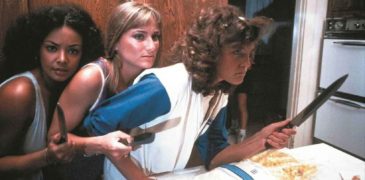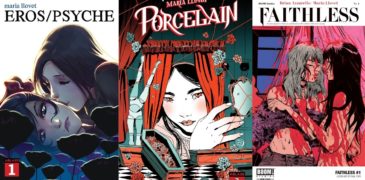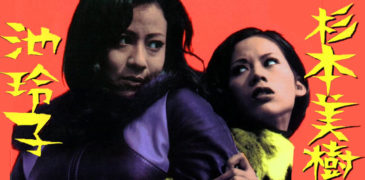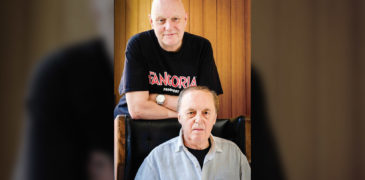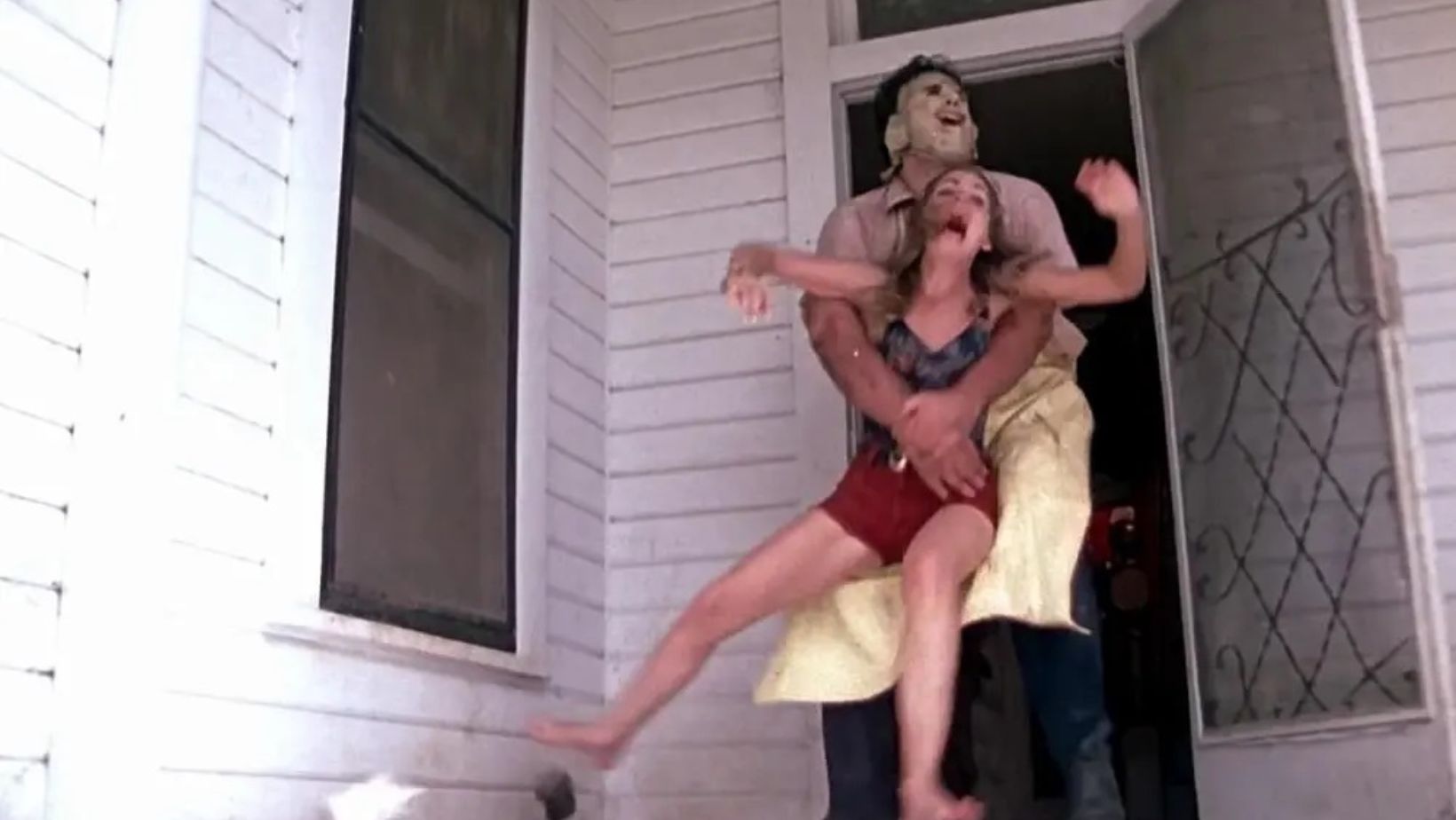
Born in Houston, Texas, Teri McMinn is an American actress most notable for her role as Pam in Tobe Hooper’s exploitation slasher The Texas Chain Saw Massacre (1974). When Hooper producer Kim Henkel saw a local news article about Teri, they requested that she attend auditions for their film and was cast as Pam, who meets an unfortunate end on a meathook. Teri wouldn’t be seen in front of the camera again until 2009, with a role in the comedy film The Cellar, and again in 2012 in the horror comedy Butcher Boys as well as working on the upcoming film Awakening, currently in production.
Being big fans of the original classic that kicked off a long-lasting series of horror films, we were excited to get the opportunity to chat with one of its original stars!

What did you think of the screenplay for The Texas Chain Saw Massacre, when you read it?
I don’t remember getting a script until we arrived for our first day on set. When I was doing my initial readings for them, I’ve no idea what parts of the script we read from, nor exactly their description of the plot, or anything about Pam’s character. It’s all a blur to me now. Although I generally always did well at auditions, I was also always nervous, but I covered well. I read for them twice. At first I was very hesitant of doing the film at all. In those days, doing non-union films was a step down. The term ‘independent film’ wasn’t even used, that I can recall. They were called ‘scab’ films.
After my first reading, I was really confused about doing it at all. I was acting and getting great leading roles at St Edwards University’s Mary Moody Northern Theater, taking a directing class, and waiting tables to support myself. I was very happily involved in St Ed’s and doing what I loved. A friend we all called,’ Wild Bill’, who’d worked in some B films aka non-union, an avid supporter of my work, encouraged me to do it, to call them back and tell them I really did want to do the film. “What have ya got to lose, Teri? Just do it!” I was reticent and nervous to make the call, but I did. I spoke to Kim and he told me to come back to the apartment/office on San Antonio and 10th Street. I think it was San Antonio. John Dugan, who unbeknownst to me was to play the part of Grandpa’, and Lou Perryman, who was to be our ADP, were both living in the apartment, but it was also the Vortex office. Kim told me to come around 7:00 PM, and to ‘wear some short-shorts’. ‘Short-shorts’: that raised another red flag for me, but I did as I was told.
I put on my white short-shorts with pastel lavender and pink flowers embroidered on the sides, my short sleeved peachy-pink crinkled shrink top, a pair of sandals, and rode my bicycle from my apartment at 909 W 22nd Street just off ‘The Drag’ (Guadalupe St), and the UT campus, around a mile to San Antonio St and 10th, to audition. It was mid-July, so it was a hot Texas night. I recall it was still light as I was riding over. I’m not sure who all were there. I think it was Kim, Tobe, John, and Lou, but there may have been others. I knew no one. I felt I read well and rode my bike back home. They called the next day. Shooting would begin the next week. My immediate thought when they called the next day to tell me I’d been chosen to play Pam, I kind of panicked because I had to get all my waitressing shifts covered at Mrs. R’s. I’d worked there for a year and had worked hard to get the best shifts on the best nights. This was how I lived, ate, paid rent, and my classes at St Ed’s.
As for the script and how I felt when I read it, not much. I couldn’t wrap my head around meat hooks, some guy named ‘Leatherface’, chain saws, nor could I visualize how we would be chased, hung, hammered, and all fighting for our lives. I’d heard nothing of the murderous Ed Gein, and I hadn’t a clue what ‘Headcheese’ (the working title) was. When it did all begin to gel for me was when we began filming my scenes in the house with Leatherface. It began to make more sense in my scene in the chicken room. I had to trip over the galvanized, sharp edged bucket thirteen times as my injured shin recalls. Then, we really began to collaborate, Gunnar, Tobe, Daniel, Kim, Wayne, Mike, all of us worked as a cohesive unit, on all the scenes in the hallway and on the porch doorway. It was then that it really began to take shape and fall in place. We filmed from early morning until 8:30 at night, with an hour for lunch. It was a very long day, but also one of our most productive collectively.
The day we shot the meat hook scene, after he called, “cut”, there was a dead silence. I looked out and there were like 15-20 people with eyes staring aghast, their mouths open, not breathing. All the cast and crew came to watch the scene being filmed. It felt like we had something. The meat hook scene was completed in three hours. Boom, done. Something tangible, something profound clicked for me that day. That was my feeling and what I recall.
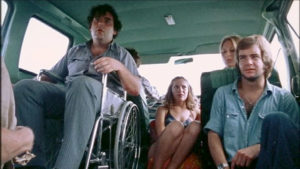
What was each day’s shooting like? What was the feeling like on the set?
Hot, very, very hot. Each day was extremely hot, no AC anywhere, no luxury RV’s, just incredibly long kind of confusing, “What are we doing?” Whispered amongst ourselves (Marilyn, Allen, Bill, me and Franklin, who stayed in character throughout the entire shoot). There were a lot of hours, days, of the cast sitting around waiting for clouds to pass, the crew to finish a set up, technical difficulties, many, many hours of boredom and nothing happening but waiting. I do recall that after the first five days we got some lawn chairs. Before that there were only two, so we swapped out, sat on the steps of the Sawyer house, and in the porch swing, or laid down on that porch. The swing was later moved from the porch out into the yard along with the frame that held it. We began shooting first at the Hardesty house, then I think we went to some scenes in the van.
Since Bill and I had received little input from Tobe about our characters, no background, no clues as to who we were as people, Bill and I formed our own background story. We decided that we were engaged for sure and possible even secretly married, and very in love. I really need to ask Bill what he recalls we decided! We spent a majority of our time getting to know one another. Under fairly confusing and somewhat dire circumstances, we all got along. Although always friendly, we never had much chance of getting together with the crew. They had their own problems with the technical end. We had little interaction with the crew, much more with Dotty Pearl, our talented make-up artist, and always with Lou Perryman. Lou, was at heart an actor and was a great buddy for all of us, cast and crew alike, kind of like a social lubricant who always had a big smile, a wink, and a thumbs up after we finished a scene. Lou let us (the actors) know we’d nailed it. It was so important and greatly appreciated. Writer/producer, Kim Henkel was the one to clarify any of our script questions, and he gave us our script rewrites. Tobe just wasn’t an actor’s director, so between Lou and Sallye Richardson, who was the AD and set photographer, we got our much needed validation. There was a lot of behind the scenes tension with Tobe, the crew, and the money guys.
Then, after our second week shooting, we shut down. They’d run out of money and we weren’t a third of the way done. What??!! The main thing I recall was that after the initial two weeks, after a few days off, they found some money and we returned. Our new contracts included the nebulous possibility of filming another month. The catch was we were now being paid with “deferred money”, meaning no more paychecks, no money. This thing had to come out of the can… AND make a profit, if we were ever going to be repaid! Oy vey. I immediately lost my cushy waitressing gig at Mrs Robinson’s on South Congress Avenue. They could no longer cover my shifts and I had to be replaced. It put me in a terrible position financially. Meanwhile, I had landed a plum role at St Ed’s and began rehearsing for ”The Rainmaker”, playing the lead as the spinster, “Lizzie Curry”, at St Ed’s. Two and a half hours on stage every night! They scheduled rehearsals around my film schedule. LA actor, Peter Breck, known for playing the handsome, illegitimate Barkley brother “Nick Barkley”, on the popular TV series, ”The Big Valley”, also starring Barbara Stanwyck, was to play “Starbuck” to my “Lizzie”. I would often go immediately to Mary Moody Northern Theater directly from the set… and I loved it! However, now, I was almost completely broke. Ahh, what we do for love.

Did you like the final cut of the film?
I did, but only 35 years later when I eventually came ‘out’ as “Pam”. Unfortunately, I needed to move on and get work, money, immediately after their extended filming schedule. I was more than broke. The sky opened up. Incredibly, in September ’73, I was cast in an Equity play, “What Did We Do Wrong”, at The Country Dinner Playhouse in North Austin, with the wonderful actor, Andy Devine. Joining the unions was very important to me. Joining Actor’s Equity Association was numero uno on my list of must-dos. It meant I could be hired to act and work in plays, and finally get PAID for all my years of training and hard work. I could eat and simultaneously hone my beloved craft.
In December 1973, three months after we’d wrapped filming, on a rainy, cold night, I packed my VW bus with all my worldly belongings and moved to Dallas. I soon found some roommates and we shared a big house. We all slung cocktails in the clubs and restaurants on the newly transformed and very hot Greenville Avenue, the place to be in Big D. First, I worked at the elite and hopping busy Daddy’s Money, then, I went across the Greenville strip to The Pawn Shop, and next to the number one wild club, called HP Cassidy’s. Dallas Cowboys star Quarterback, Craig Morton was a co-owner and it was one lucrative, fun, wild night after another. Simultaneously, I’d been auditioning for local theaters and I was soon cast to play June Allyson’s daughter, and her son, Dick Powell Jr’s fiancé, in a play, “My Daughter, Your Son.” Chainsaw was so far in my rearview, I hardly gave it a thought. I was eating, paying my rent, buying clothes, living. And, it was a big relief to my young, frustrated, previously starving artist-self.
Thirty-five years later in March 2008, when I was to make my very first personal appearance since filming at Monster Mania in Cherry Hill, NJ, I saw the picture Sally Richardson took of me that I’d never seen before. Trying to convince me that fans wanted to meet me, someone told me, “Hey Teri, ya know, you’re on Wikipedia, don’t you?” My reply was, “What’s Wikipedia?” When they explained it to me, I told them they must be kidding. Not kidding. Seeing the Wiki picture of me brought back a flood of memories. Sallye walked past me as I was sitting on the steps, head resting in my hands, looking very depressed (as I was) and said, “Hey, Teri, look over here.” Head in hands, I looked over at her and tried to smile. Click. That’s the shot.
Cut to late September 1974. I get to work and it’s busy. My bartender, Mike, asked me, “Hey, Teri, didn’t you tell me you filmed some horror movie in Austin last year?” “Mike, I need two Scotch and sodas, a Singapore sling, and a Screwdriver. And, ah… yeah, I did, why?” So Mike tells me I’m in all these trailers on TV, running, screaming. I seriously doubted it was me he’d seen and baffled the film might even be out, released. Really? I was only the second female lead, not the lead. Surely they’d be using Marilyn’s scenes, not mine. I hadn’t watched any TV for a very long time. I’d been working my ass off ever since I left filming. I soon discovered indeed it was out, but I’d heard nothing about the release from anyone connected to the film. I only found out 35 years later there’d been a Premier in Austin October 1, 1974.

What was it like working with Tobe Hooper?
We got along fine while filming. For me, he was not a great communicator on set, until later into filming. Later, during my chicken room, chase, and then meat hook scenes in the house, he became more communicative, and we began to collaborate. The only time we argued was when they surprised me with Daniel’s famous dolly shot. I was getting my make-up touched up and out of the corner of my eye noticed Daniel was lying underneath the slatted swing with his camera, the very swing I was about to go and sit in. No one had bothered to explain the shot to me. Perplexed, I asked why Daniel and his camera were perched underneath the swing. No one had told me anything about the concept of the shot or about the scene. If anyone, especially Tobe, the director, had bothered to explain it to me, perhaps it wouldn’t have felt so icky, but it literally felt like they were all in on something and that they were trying to trick me into whatever it was they wanted me to do. And, that’s exactly what they were doing. It was strange and I got very little in the way of an explanation from Tobe. Tobe, finally became so exasperated with my protestations, that in a raised voice said, “Aw, goddamnit, Teri, we’re gonna shoot all around it!” ‘It’, meaning my ass.
As a serious actress, I wanted to protect myself, what I would or would not show on film. After signing the second, deferred money contract I’d been asked to do a skinny-dipping scene. I’d said no. Seeing my cheeks and those very short red shorts up on the screen in cinemascope and technicolor in close-up as I walk up to a house was not something I’d ever imagined being a part of. I wasn’t thrilled… until decades later. 1974 and 2024 is like comparing 1920 to 1970. When I began to appreciate it, I embraced it whole heartedly, and remarked to my rep, “Hey, can we get that up on a billboard on Sunset Strip?!!”, joking of course, but it would make a damned nice billboard! Now, I love that shot and give Daniel Pearl full credit and my sincere thanks.
Why is The Texas Chain Saw Massacre such a huge classic horror film?
I believe the reason TCSM ’74 is so powerful is that it was a groundbreaker in its subject matter, a murderous family, the ideas of meat hooks and chainsaws was completely new, the beautiful cinematography, and the editing that causes the viewer to think they’ve seen more than was actually on film. The magic of Chainsaw ’74 is that the mind does the completion of the horror. The horror lives in the audience’s imagining what they’ve just seen. The perfect example is when you see Pam’s bare back coming toward the meathook, then suddenly a quick cut to Pam being dropped on the hook. There are many, many similar sequences where this is done in the editing. Another example is everyone thinks there was a lot of blood. Not true. If you look at the meat hook scene, I think there are about 3-4 seconds when the camera pans down Pam’s legs to the bucket that sets beneath her as she’s hanging when you catch that quick sight of blood dripping. It was so groundbreaking in subject matter that it was banned across the world for ten long years. By the time it started having its cult following, I was 32, and no longer an ingenue. In 1983, there was no HBO, HULU, Netflix… no streaming, and most scripts at that time had parts for 25 men and two women. No longer being an ingenue was a deadly prospect for an actress for many decades. We’ve come a long, long way and we still have a long way to go.
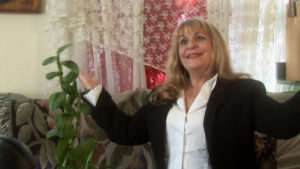
What’s changed about The Texas Chain Saw Massacre ’74 and how is everything today for everyone involved?
I can only speak for myself. For me, it’s like night and day. Kim Henkel took over in running the TCSM franchise in 2018 and he’s worked hard to unite us, to improve our lives and welcome all of our participation with our fans. Kim’s responsible for bringing us all together, bringing the cast in and joining us at Texas Frightmare Weekend in 2022, creating character products for each of us selling on the TCSM website he had created for the franchise, projects, arranged group events, cast and crew video Q&A’s/interviews, video games, hiring Chase Anderson to run all the franchise’s social media and marketing, and Kim’s son, Ian is also onboard is also involved in a big way. It took 45 years, but now all the TSCM cast and tech folks can finally share in the benefits of this beloved cult classic that we all worked so hard to film. I’m grateful every single day.
This interview was provided to Grimoire of Horror by John Wisniewski
More Interviews
Most notable for playing Trish in cult 80s slasher The Slumber Party Massacre, Michele Michaels is an American actress and writer born in Orange, California. Landing her first acting role… Maria Llovet has been creating comics since 2011. As a Spanish-American author, illustrator, and animator, she is best known for Heartbeat and Eros/Psyche. Here at the Grimoire of Horror, we… Back in the 1970s, the names of Reiko Ike and Miki Sugimoto were on everyone’s lips. Hailed as the “queens of porno”, they not only became exploitation cinema royalty but… With the launch of the Jan 20 launch of FRIGHTFEST SATURDAY SCARES WITH ALAN JONES on Fast TV channel NYX, Alan recounts his rise to journalistic prominence – from stealing…Michele Michaels Interview – Discussing the Making of The Slumber Party Massacre (1982)
Interview With Maria Llovet – Return to Oz, Psychology, and Sexuality
An Interview with The Vamps – Pinky Violence Royalty Reiko Ike and Miki Sugimoto Talk Sex
An Interview with Alan Jones – Famed Film Journalist
